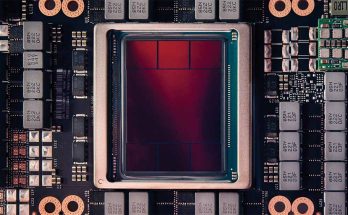“This 22-Year-Old Builds Chips in His Parents’ Garage”
WIRED, January 20, 2022
Business
By Tom Simonite
“Sam Zeloof combines 1970s-era machines with homemade designs. His creations show what’s possible for small-scale silicon tinkerers.”
In August, chipmaker Intel revealed new details about its plan to build a “mega-fab” on US soil, a $100 billion factory where 10,000 workers will make a new generation of powerful processors studded with billions of transistors. The same month, 22-year-old Sam Zeloof announced his own semiconductor milestone. It was achieved alone in his family’s New Jersey garage, about 30 miles from where the first transistor was made at Bell Labs in 1947.
With a collection of salvaged and homemade equipment, Zeloof produced a chip with 1,200 transistors. He had sliced up wafers of silicon, patterned them with microscopic designs using ultraviolet light, and dunked them in acid by hand, documenting the process on YouTube and his blog. “Maybe it’s overconfidence, but I have a mentality that another human figured it out, so I can too, even if maybe it takes me longer,” he says.
Zeloof’s chip was his second. He made the first, much smaller one as a high school senior in 2018; he started making individual transistors a year before that. His chips lag Intel’s by technological eons, but Zeloof argues only half-jokingly that he’s making faster progress than the semiconductor industry did in its early days. His second chip has 200 times as many transistors as his first, a growth rate outpacing Moore’s law, the rule of thumb coined by an Intel cofounder that says the number of transistors on a chip doubles roughly every two years.
Zeloof now hopes to match the scale of Intel’s breakthrough 4004 chip from 1971, the first commercial microprocessor, which had 2,300 transistors and was used in calculators and other business machines. In December, he started work on an interim circuit design that can perform simple addition.
Outside Zeloof’s garage, the pandemic has triggered a global semiconductor shortage, hobbling supplies of products from cars to game consoles. That’s inspired new interest from policymakers in rebuilding the US capacity to produce its own computer chips, after decades of offshoring.
Garage-built chips aren’t about to power your PlayStation, but Zeloof says his unusual hobby has convinced him that society would benefit from chipmaking being more accessible to inventors without multimillion-dollar budgets. “That really high barrier to entry will make you super risk-averse, and that’s bad for innovation,” Zeloof says.
Zeloof started down the path to making his own chips as a high school junior, in 2016. He was impressed by YouTube videos from inventor and entrepreneur Jeri Ellsworth in which she made her own, thumb-sized transistors, in a process that included templates cut from vinyl decals and a bottle of rust stain remover. Zeloof set out to replicate Ellsworth’s project and take what to him seemed a logical next step: going from lone transistors to integrated circuits, a jump that historically took about a decade. “He took it a quantum leap further,” says Ellsworth, now CEO of an augmented-reality startup called Tilt Five. “There’s tremendous value in reminding the world that these industries that seem so far out of reach started somewhere more modest, and you can do that yourself.”
About the Author:
Tom Simonite is a senior editor who edits WIRED’s business coverage. He previously covered artificial intelligence and once trained an artificial neural network to generate seascapes. Simonite was previously San Francisco bureau chief at MIT Technology Review, and wrote and edited technology coverage at New Scientist magazine in London. He lives in San Francisco, where he enjoys riding his bike and testing the reactions of self-driving cars.
See also:
- Sam Zeloof website. Home Chip Lab.
- “Z2” – Upgraded Homemade Silicon Chips on YouTube.





